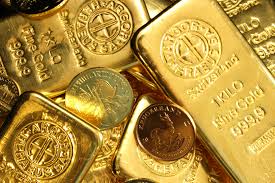Understanding Precious Metals: A Comprehensive Guide to Gold and Silver
Understanding the properties, measurements, and purity standards of Precious Metals
Precious metals have captivated humanity for millennia, valued for their rarity, beauty, and enduring utility. Gold and silver, in particular, have a storied history as both a store of value and a medium of exchange, making them foundational elements of currency and investment.
Today, these metals continue to hold a significant place in investment portfolios, often sought as a hedge against inflation and economic uncertainty. Beyond their financial roles, gold and silver are indispensable in various industrial applications and remain highly prized in jewelry and the decorative arts.
Gold (Au)

Gold, with its distinctive yellow luster, is one of the most sought-after precious metals.
Key Properties of Gold:
- Symbol: Au (derived from the Latin word "aurum")
- Atomic Number: 79
- Malleability and Ductility: Gold is exceptionally malleable (can be hammered into thin sheets) and ductile (can be drawn into wires), making it versatile for various applications.
- Conductivity: It is an excellent conductor of electricity, a property utilized in electronics.
- Corrosion Resistance: Gold is highly resistant to corrosion and oxidation, meaning it does not rust or tarnish easily, contributing to its longevity and appeal.
Measurements and Purity of Gold:
- Weight: Gold is typically measured in troy ounces, where one troy ounce equals approximately 31.1035 grams.
- Purity (Karats): The purity of gold is measured in karats (K). Pure gold is 24 karats (24K), representing 99.9% purity. Gold is often alloyed with other metals to increase its hardness or alter its color.
| Karat | Purity | Common Uses |
|---|---|---|
| 24K | 99.9% pure | Investment-grade bars and coins |
| 22K | 91.7% pure | High-end jewelry, some gold coins |
| 18K | 75.0% pure | Fine jewelry |
| 14K | 58.3% pure | Common US jewelry |
| 10K | 41.7% pure | Affordable jewelry (minimum legal gold in US) |
- Density: Gold has a specific gravity of 19.32, making it significantly denser than most other metals.
- Melting Point: Gold melts at 1,064°C (1,947°F).
Silver (Ag)

Silver, known for its brilliant white sheen, is another highly valued precious metal with unique properties.
Key Properties of Silver:
- Symbol: Ag (derived from the Latin word "argentum")
- Atomic Number: 47
- Conductivity: Silver boasts the highest electrical and thermal conductivity of all metals, making it crucial in electronics and industrial applications.
- Reflectivity: It is highly reflective, which contributes to its use in mirrors and jewelry.
- Tarnishing: Unlike gold, silver can tarnish when exposed to air (specifically sulfur compounds), forming a dark layer of silver sulfide.
Measurements and Purity of Silver:
- Weight: Like gold, silver is measured in troy ounces (31.1035 grams).
- Purity: Silver purity is typically expressed as a percentage or in terms of "fineness" (parts per thousand).
| Type | Purity | Common Uses |
|---|---|---|
| Fine Silver | 99.9% (.999 fine) | Investment-grade bars, rounds, and some coins |
| Sterling Silver | 92.5% (.925 fine) | Jewelry, silverware, and other high-quality items |
| Coin Silver | 90.0% (.900 fine) | Historic U.S. silver coins (pre-1965) |
| Britannia Silver | 95.8% (.958 fine) | British silver standard for premium items |
- Density: Silver has a specific gravity of 10.49.
- Melting Point: Silver melts at 961.8°C (1,763.2°F).













